We know; we know; you may be asking yourself why the first two images of this post are put together. What could rings and nail files possibly have in common?! Well, pieces of them are made from the same mineral. That mineral is garnet!

From radiant red, glittering green, and many colors in between; this post will take you on a journey that explores the mineral garnet, how it played a pivotal role in society’s many cultures and industry through the ages, and how it plays an important role in unraveling geologic mysteries! We hope you enjoy all of the garnet love in this post!
What is Garnet?
First and foremost, the word garnet is derived from the Latin: Granatus, likely derived from Granatum (pomegranate), as the most common variety (almandine) resembles pomegranate seeds¹. There are many different varieties of garnet (32 in total!), but there are six main types; almandine, pyrope, spessartine, uvarovite, andradite, and grossular². The generalized chemical formula for garnet is X3Y2Si3O12; where the X and Y are places within the formula where other elements can fit, ultimately creating the wide variety (and color) of garnets². Aside from coming in a wide array of colors, when a garnet is broken it will exhibit the property of fracture; meaning it does not break into symmetric pieces, but rather angular and uneven pieces. This property paired with its hardness of 7.5 on the Mohs hardness scale (a scale from 1-10 used to measure how strong a mineral is compared to other minerals and objects. A diamond is the hardest at a 10) makes garnet incredibly durable and abrasive.
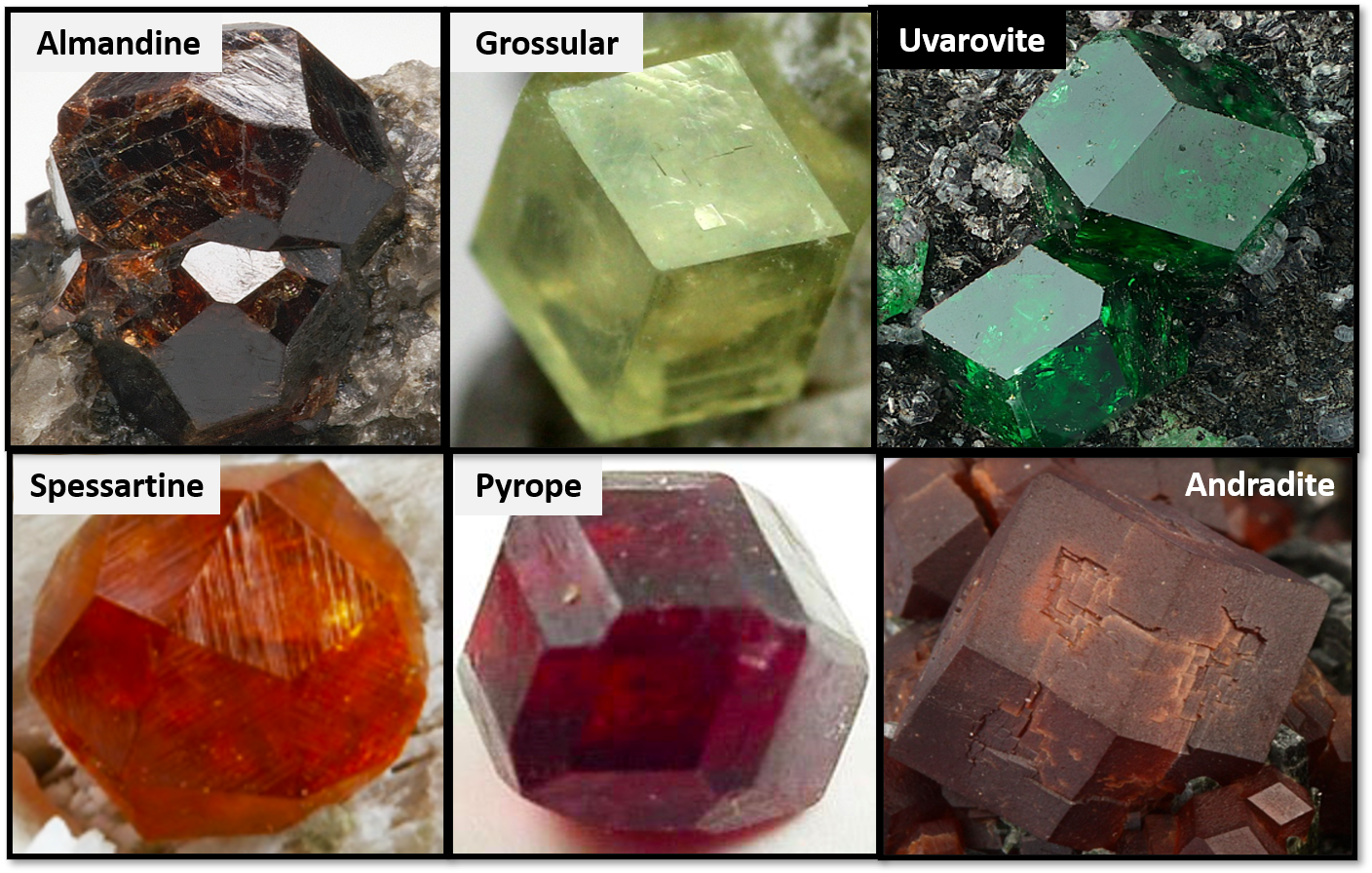
Garnet can be found in a variety of geologic places and on every continent. They are typically found in metamorphic rocks (rocks that have been transformed from heat and pressure) like schists, but also in some igneous rocks (rocks formed from cooled magma), such as granites. Garnets can even be found in sediments and sedimentary rocks. Because garnets do not break down as easily as other minerals, garnets can be transported by ancient and modern river systems and deposited among the other materials. Garnets form over a wide range of pressure and temperature conditions and have been incredibly useful for solving geologic riddles related to where rocks formed in the Earth’s crust and even in the mantle²!
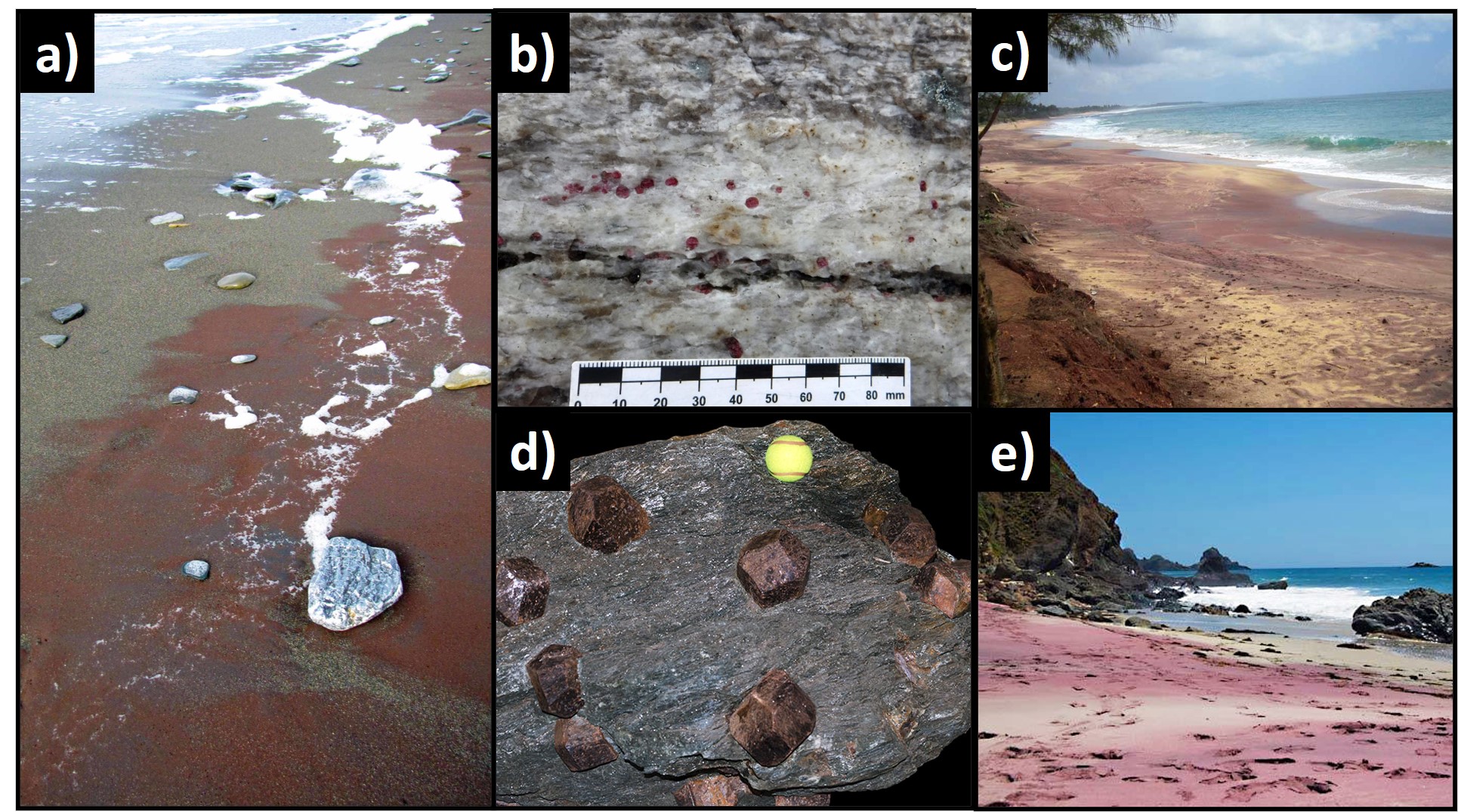
Garnet in Culture and Industry
Garnet has had a profound impact on culture and industry, unsurprisingly so, since it can be found on every continent. The physical properties of garnet allowed for it become a symbol of strength in many cultures and has been found faceted to weapons and into jewelry worn by royalty. Garnet has been found in ancient Greek, Roman, and Egyptian ruins (3100 BCE)³. Before the 19th century garnet was often referred to as a carbuncle, from the Latin; carbunculus (small, hot coal) because of the deep red color of almandine garnet. Because of the translucent (light may pass through, giving the appearance of glowing) nature of garnet, it became many things to people throughout culture. Garnets were the inspiration for dragon eyes in the Middle Ages and even inspired Nathaniel Hawthorne’s short story, The Great Carbuncle, in 1837¹, about a quest to find the legendary gem in the White Mountains of New Hampshire that could “make a noonday of midnight”. The mineral has even made an appearance as a pivotal character in the cartoon, Steven Universe (created by Rebecca Sugar) where the character, “Garnet”, is a leader of the Crystal Gems species, and is portrayed as a strong character, much like the actual mineral itself4.
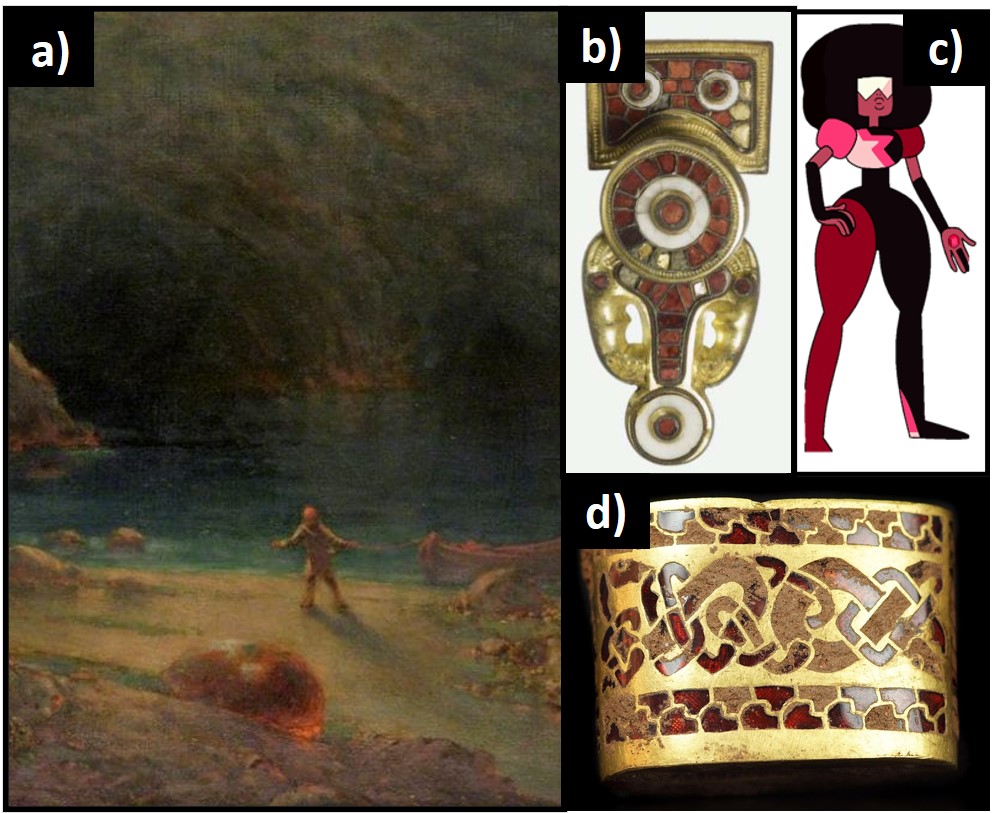
Nowadays, the less common varieties of garnet (grossular, andradite, spessartine, uvarovite, and pyrope) have been discovered and have become popular in the jewelry industry for their array of colors.
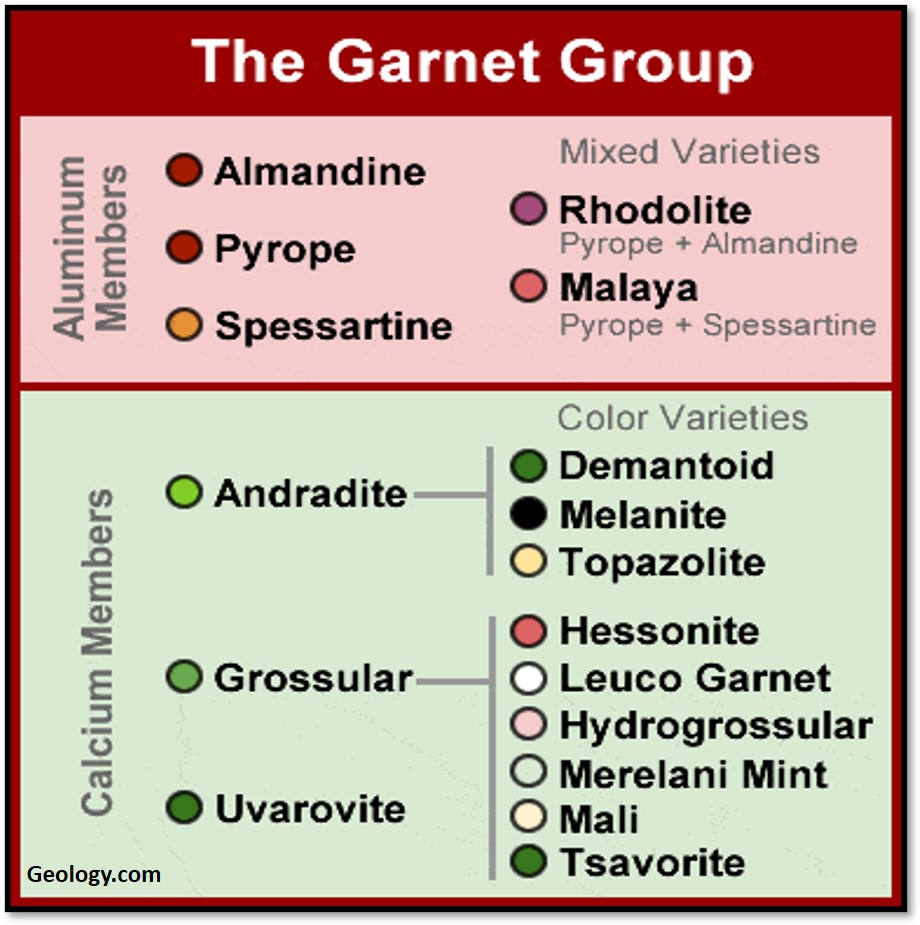
Garnet’s physical properties make it an excellent abrasive and garnets are used in sandpaper, nail files, water-jet cutting, and abrasive blasting worldwide5. A synthetic garnet has since been created and is used in laser technology². In more recent history (early 19th century) garnet abrasives took off as one of the more pivotal materials in the industry. Garnets from Gore Mountain New York (a portion of which became the Barton Mine) was first used as sandpaper coating in 1878 by the Barton family5. Garnet abrasive is popular all over the world and has become a more popular choice for a natural material because the dust it can produce as part of the abrasion process is not toxic.
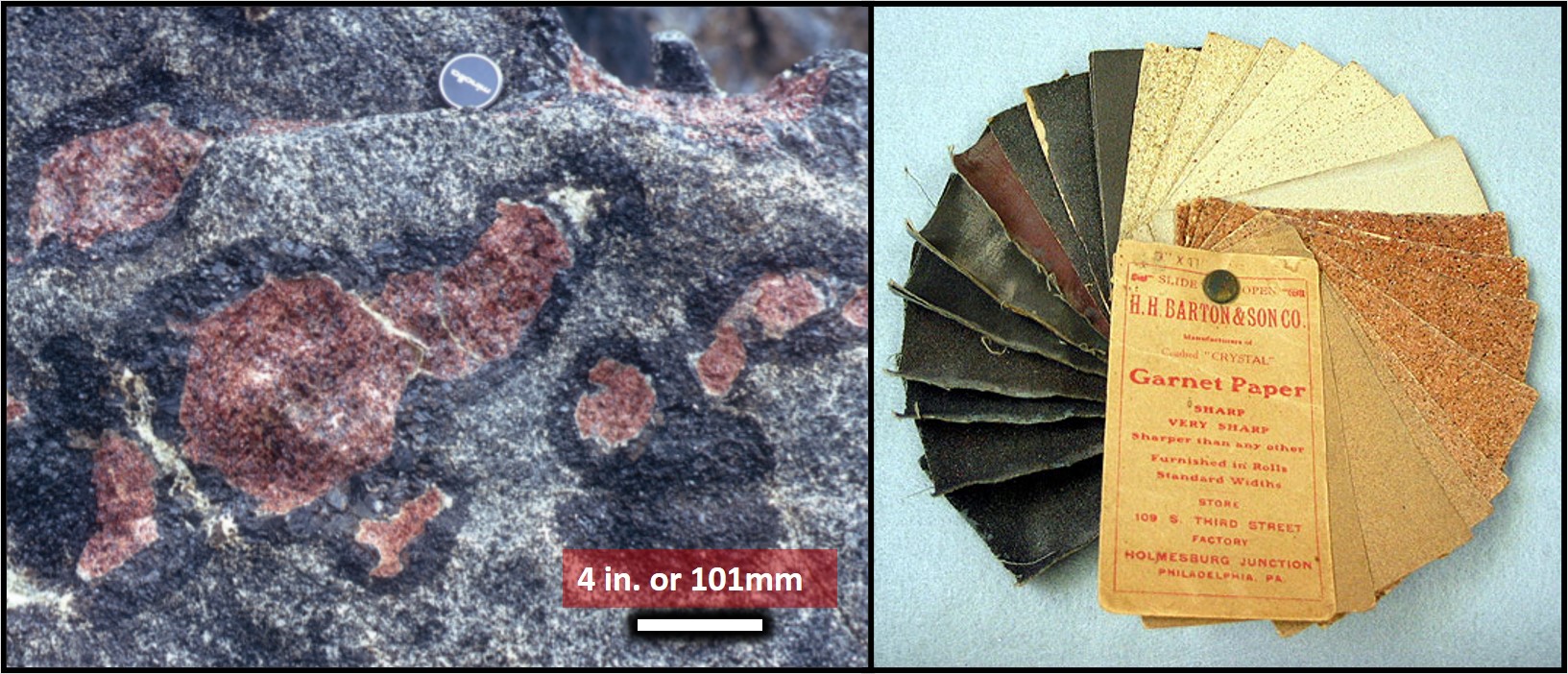
Can You Find Garnet in Your “Backyard”?
Garnets can be found in many countries around the world and in most of the US states, including Florida (garnet-rich sand in several beaches-Clearwater Beach in Pinellas County)!
- Ruby Valley Montana
- Almandine along the Connecticut Garnet Trail
- El Hoyazo of Nijar, Spain
- Garnet Group in Norway
- Kairakau Beach, Central Hawke’s Bay District, North Island, New Zealand
- East Grant’s Ridge, Grants, New Mexico
- Rincon Ridge, Placitas, New Mexico
- Spessartine from Atlay, China.
- Larsemann Hill, Antarctica
- Tsavorite from Tanzania, Africa
- Melanite (andradite variety) in South America
- Almandine in Ötz Valley, Tyrol, Austria
The following links will take you to specific Mindat.org pages where you can find more information on the different types of garnets, a map, and a detailed list as to where they are found around the world!
Almandine: Spessartine: Pyrope: Uvarovite: Grossular: Andradite
References:
1Shang, Phoebe. “Garnet Symbolism and Legends.” International Gem Society, 9 Dec. 2020, www.gemsociety.org/article/garnet-symbolism-legends/.
2Baxter, Ethan F., Mark J. Caddick, and Jay J. Ague. “Garnet: Common mineral, uncommonly useful.” Elements 9.6 (2013): 415-419.
3Hilgner, Alexandra. “Garnet Jewellery in Early Medieval Sweden.” Weltweites Zellwerk | International Framework, 2015, zellwerk.hypotheses.org/233.
4“Garnet.” Steven Universe Wiki, https://steven-universe.fandom.com/wiki/Garnet
5Evans, James G., and Phillip R. Moyle. Chapter L: US industrial garnet. No. 2209-L. 2006.
6“Garnet sand beach in Sri Lanka.” Upali de Silva Jayawardena. Imaggeo: European Geosciences Union, 25 February, 2016, https://imaggeo.egu.eu/view/3985/
7“Offbeat Traveler: Purple sands of Big Sur’s Pfeiffer Beach.” Los Angeles Times, 13 July, 2011, https://www.latimes.com/travel/deals/la-trb-offbeat-traveler-pfeiffer-beach-20110713-photogallery.html
8“Garnet.” Australian Government: Geoscience Australia, https://www.ga.gov.au/education/classroom-resources/minerals-energy/australian-mineral-facts/garnet
9“Tasiuyak Complex.” Système d’information géominière du Québec, 17 April, 2018, http://gq.mines.gouv.qc.ca/lexique-stratigraphique/province-de-nain/complexe-de-tasiuyak_en/
10Mervine, Evelyn. “Monday Geology Picture(s): Garnet Sands in Nome, Alaska.” AGU Blogosphere, 17 September, 2012, https://blogs.agu.org/georneys/2012/09/17/monday-geology-pictures-garnet-sands-in-nome-alaska/
11Kelly, William. “Mining, Geology, and Geological History of Garnet at the Barton Garnet Mine, Gore Mountain, New York.” Adirondack Journal of Environmental Studies 21.1 (2016): 9.


Interesting article. Garnet is my birthstone and I have a mother’s ring with a
Rhodelite garnet for my birthstone.